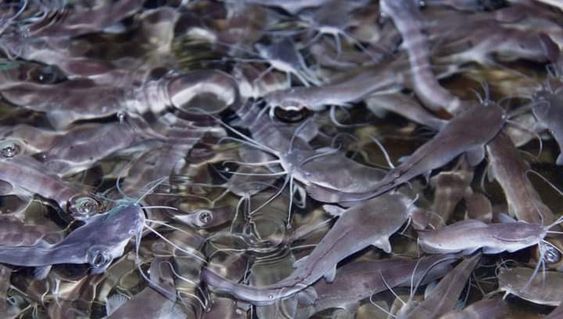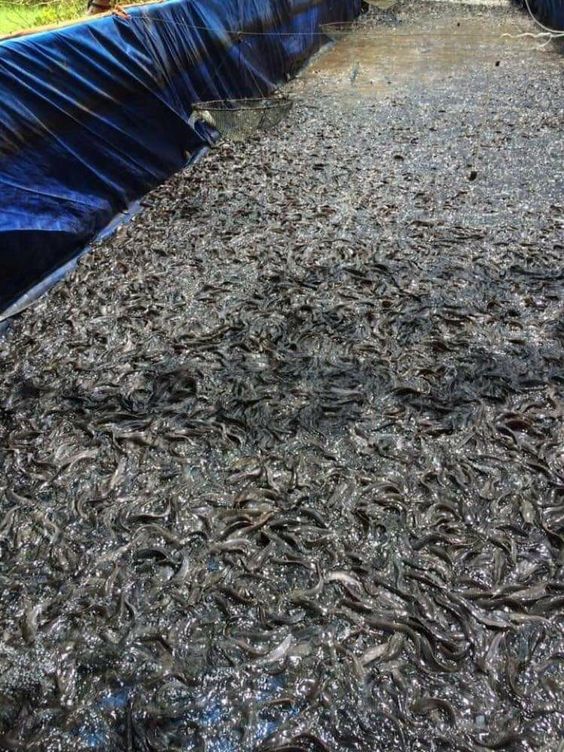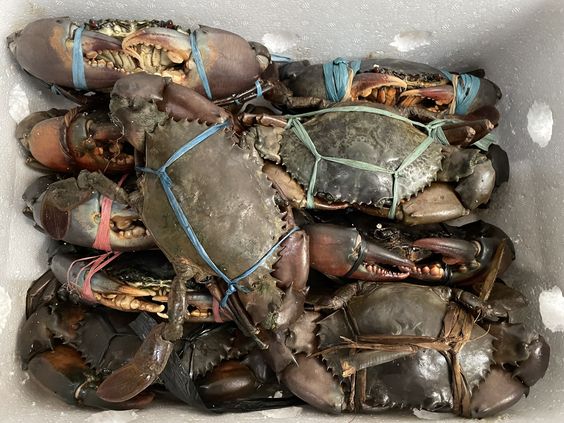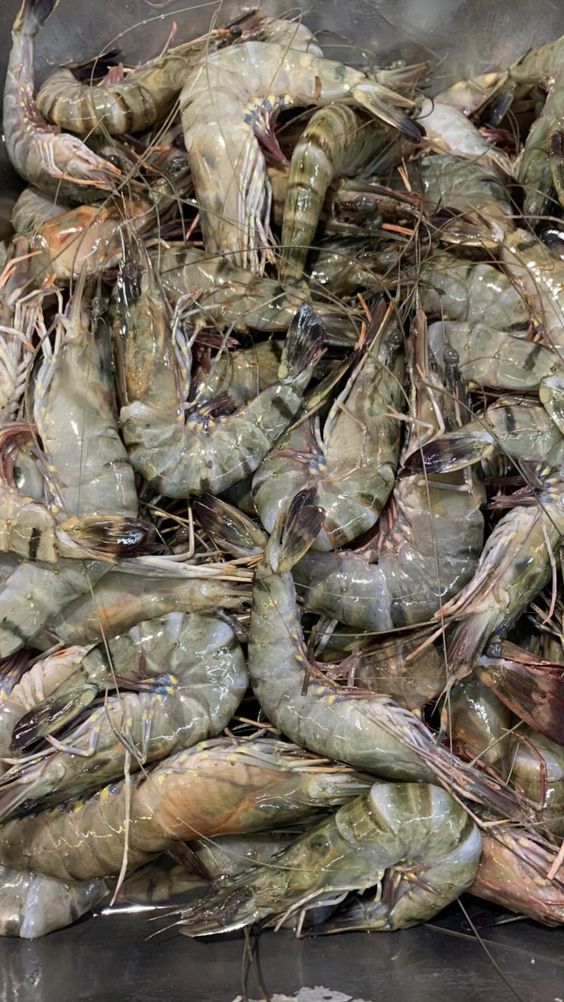The Process of Cultivating Catfish: A Comprehensive Guide
The Process of Cultivating Catfish, also known as catfish farming, is a form of aquaculture that involves raising catfish in controlled environments for consumption. It’s a popular and rewarding practice due to several factors, including the fish’s fast growth rate, high demand, and relative ease of care. This guide delves into the intricacies of catfish cultivation, exploring the entire process from pond preparation to harvest, while also outlining the benefits, objectives, and valuable tips for successful catfish farming.
Contents
The Process of Cultivating Catfish
Catfish are omnivorous freshwater fish belonging to the Siluriformes order. Channel catfish (Ictalurus punctatus) is the most commercially cultivated species globally, followed by Pangasius catfish (Pangasius bocourti) in some regions. These bottom feeders thrive in warm, still waters and are known for their whisker-like barbels used for navigation and feeding.
Catfish cultivation can be practiced in various settings, from small backyard ponds to large-scale commercial operations. The specific methods employed may differ depending on factors like available resources, desired production level, and local regulations. However, the core principles of catfish cultivation remain consistent across these variations.
Benefits The Process of Cultivating Catfish
The popularity of catfish cultivation stems from several advantages it offers:
- High Demand: Catfish is a versatile and delicious protein source enjoyed in many cultures. This translates to a steady market demand, making it a reliable income source for farmers.
- Fast Growth Rate: Catfish are known for their rapid growth, reaching market size within 6-12 months under optimal conditions. This quick turnaround allows for multiple harvests per year, maximizing production efficiency.
- Relatively Easy Maintenance: Compared to other aquaculture ventures, catfish are considered less demanding in terms of care. They are adaptable to various pond environments and have a good tolerance for moderate water quality fluctuations.
- Efficient Feed Conversion: Catfish are efficient feeders, converting a high percentage of their food intake into growth. This translates to lower feed costs and improved profitability.
- Relatively Disease Resistant: While catfish can contract diseases, they tend to be more resilient compared to some other farmed fish species.
Objectives The Process of Cultivating Catfish
The primary objectives of catfish cultivation can be summarized as follows:
- Production of High-Quality Catfish: The primary goal is to raise healthy catfish that meet market standards in terms of size, flesh quality, and overall health.
- Maximizing Profitability: Catfish farming aims to achieve efficient production with minimal costs. This involves optimizing feeding practices, maintaining healthy pond conditions, and minimizing disease outbreaks.
- Environmental Sustainability: Responsible catfish cultivation strives to minimize environmental impact. This includes managing water quality effectively, minimizing waste production, and adhering to sustainable practices.
The Process The Process of Cultivating Catfish: A Step-by-Step Guide
The Process of Cultivating Catfish can be broadly divided into distinct stages, each requiring specific considerations and actions.
The Process of Cultivating Catfish Pond Preparation
The success of your catfish farm hinges on a well-prepared pond. Here’s what you need to consider:
- Pond Location: Choose a location with access to a reliable water source and good drainage. Ensure the site is free from contaminants and flooding risks.
- Pond Size: The ideal pond size depends on your intended production scale and stocking density. Consider starting small if you’re new to catfish farming and gradually expand as you gain experience.
- Pond Construction: Ponds can be constructed from various materials like earth, concrete, or liners. Each material has its advantages and disadvantages; choose the one that best suits your budget and resources.
- Water Quality Management: Before stocking fish, ensure the water quality is suitable for catfish. Maintain adequate oxygen levels, control pH levels within the appropriate range (typically 6.5-8.5), and manage ammonia and nitrite levels to prevent fish stress and mortalities.
Selecting Fingerlings
Fingerlings are young catfish, typically 1-2 inches in length, that are ready for stocking in ponds. Here are some key points for selecting healthy fingerlings:
- Source: Purchase fingerlings from reputable hatcheries that maintain proper breeding practices and disease prevention protocols.
- Size and Age: Choose fingerlings of uniform size and age to minimize competition for food and resources within the pond.
- Health: Inspect the fingerlings for any signs of disease, lethargy, or physical deformities. Opt for lively and healthy-looking fish with bright eyes and smooth skin.
Catfish Feeding
The Process of Cultivating Catfish,Feeding practices play a critical role in catfish growth and overall health. Here are some key points:
- Feed Selection: Choose a commercially prepared catfish feed formulated to meet the specific nutritional needs of catfish at different stages of development.
- Feeding Frequency: Feed catfish two to four times daily, depending on their age and water temperature. Younger fish require more frequent feedings, while older catfish can be fed less frequently.
- Feeding Amount: Feed the fish what they can consume within a reasonable timeframe (typically 15-30 minutes). Overfeeding can lead to water quality deterioration and increased waste production.
- Feed Management: Monitor feeding behavior and adjust feed quantities as needed. Uneaten feed should be removed to prevent water quality issues.
Pond Management
The Process of Cultivating Catfish,Maintaining optimal pond conditions is crucial for healthy catfish growth. Here are some essential pond management practices:
- Water Quality Monitoring: Regularly monitor water quality parameters like dissolved oxygen, pH, ammonia, and nitrite levels. Implement corrective measures if any parameter falls outside the desirable range.
- Aeration: Providing adequate aeration, particularly in densely stocked ponds, helps maintain dissolved oxygen levels at a suitable level for catfish respiration.
- Water Exchange: Periodically perform partial water exchanges (around 10-25% of the total pond volume) to remove accumulated waste products and replenish oxygen levels.
Disease Prevention and Management
The Process of Cultivating Catfish,While catfish are generally hardy, they are susceptible to certain diseases. Here are some strategies for prevention and management:
- Maintaining Good Water Quality: Consistent monitoring and management of water quality is the primary defense against disease outbreaks.
- Biosecurity: Implement biosecurity measures like disinfecting equipment and footwear to minimize the introduction of pathogens into the pond environment.
- Vaccination: In some cases, vaccination may be recommended to protect catfish from specific diseases. Consult with a veterinarian specializing in aquaculture for guidance.
- Early Detection: Regularly monitor fish health and behavior. Early detection and treatment of disease outbreaks can help minimize losses.
The Process of Cultivating Catfish Harvest
When catfish reach their desired market size, it’s time for harvest. Here are the key considerations:
- Harvest Timing: The optimal harvest time depends on market demand, desired catfish size, and economic factors.
- Harvest Method: Seining, which involves dragging a large net through the pond, is a common harvest method for catfish. Other methods like trap nets or hook and line can also be employed depending on the pond size and scale of operation.
- Handling: Handle catfish carefully during harvest to minimize stress and maintain product quality.
Post-Harvest Handling and Processing
The Process of Cultivating Catfish,Once harvested, catfish undergo processing before reaching consumers. Here’s a general overview:
- Grading: The Process of Cultivating Catfish are typically graded based on size and weight to meet market specifications.
- Transportation: The Process of Cultivating Catfish are transported in specially designed tanks that maintain water quality and oxygen levels. In some cases, catfish may be processed on-site or transported to processing facilities.
- Processing: Processing may involve tasks like gutting, skinning, and icing to prepare the fish for sale.
Beyond the Basics: Tips and Considerations Process of Cultivating Catfish
- Record Keeping: Maintaining detailed records of pond management activities, stocking densities, feed types and quantities, and harvest data is essential for monitoring performance and identifying areas for improvement.
- Regulations: Familiarize yourself with local and regional regulations pertaining to catfish farming. These regulations may cover aspects like pond construction, water quality standards, and disease reporting.
- Seeking Professional Advice: Consulting with experienced catfish farmers, aquaculture specialists, and extension agents can provide valuable guidance and support, especially for new farmers.






